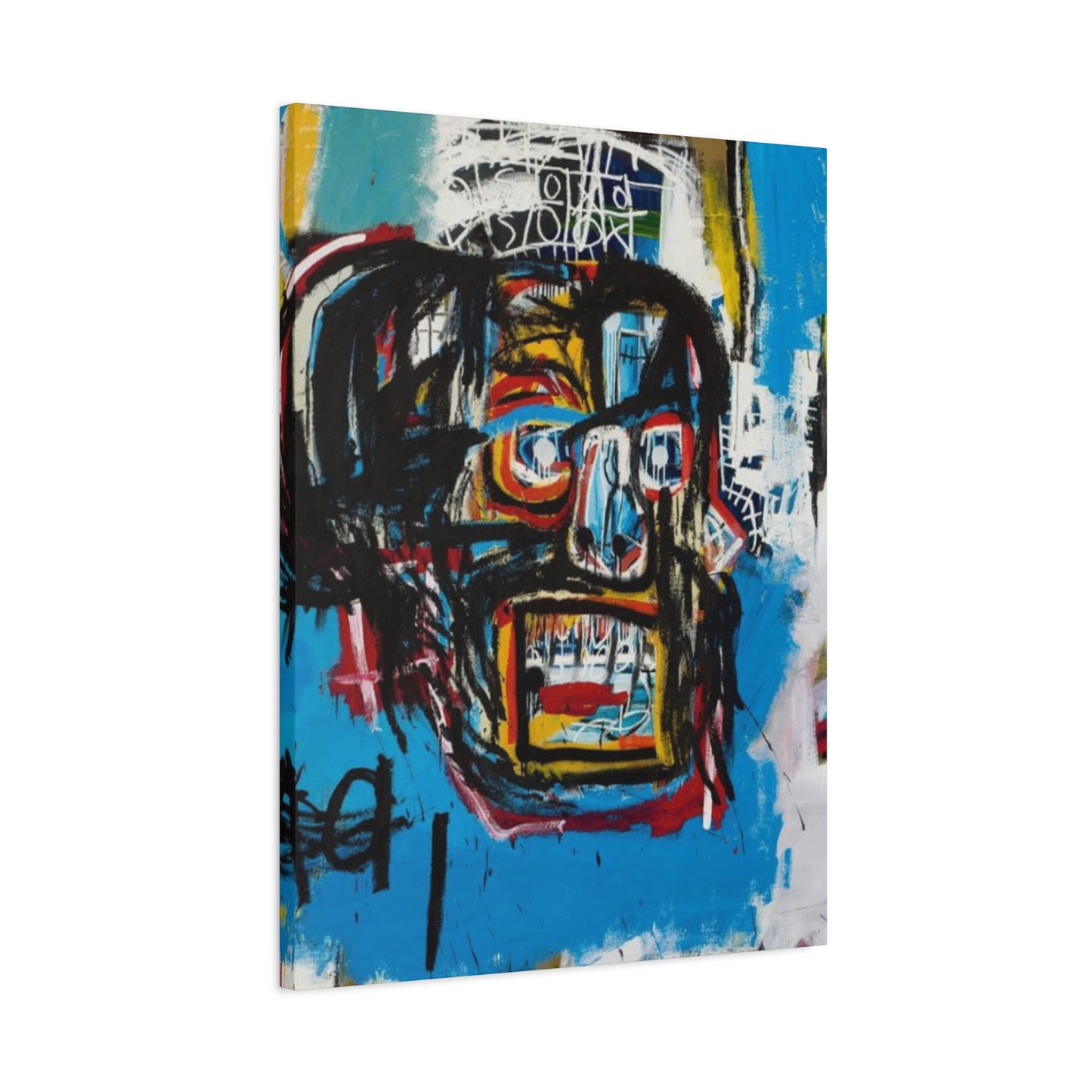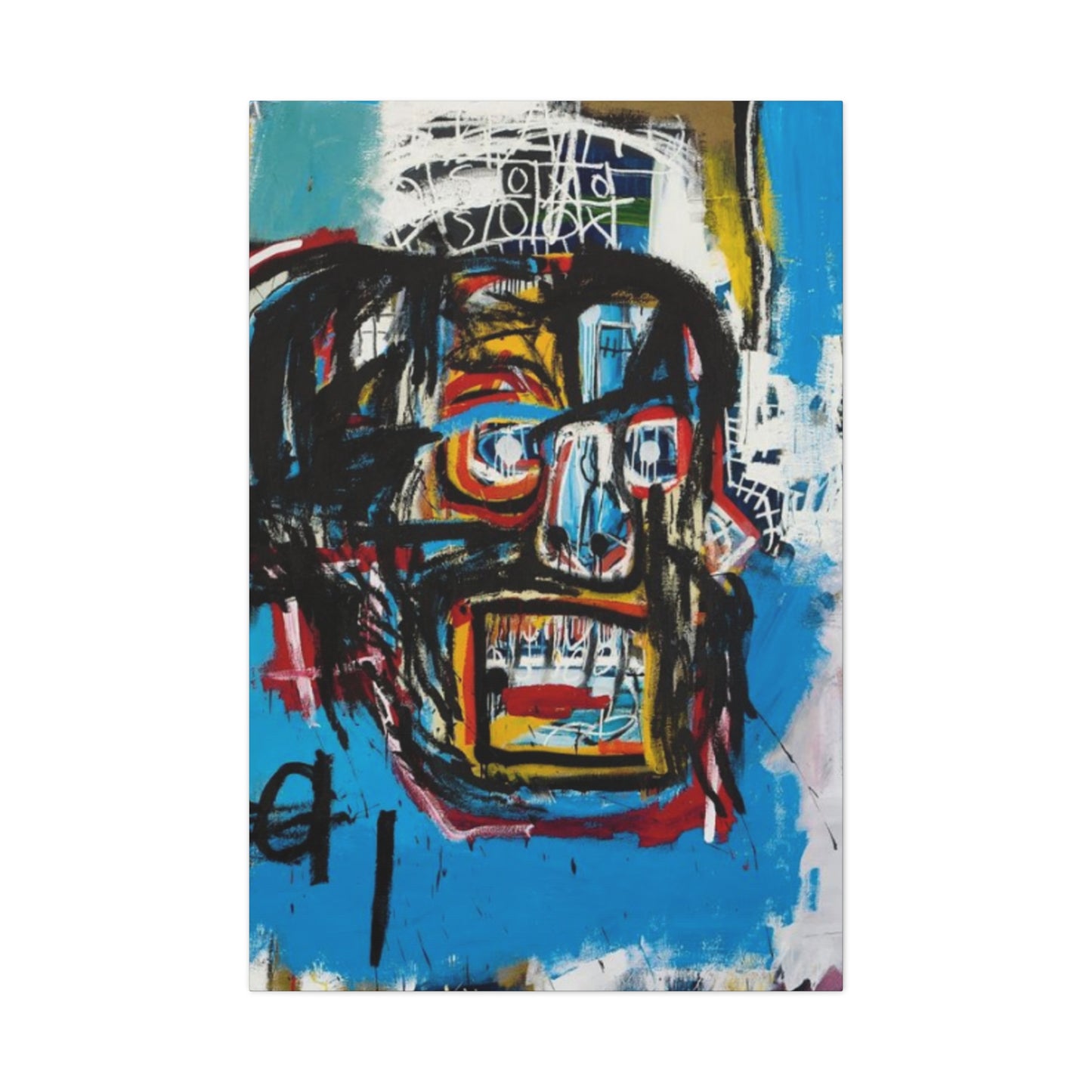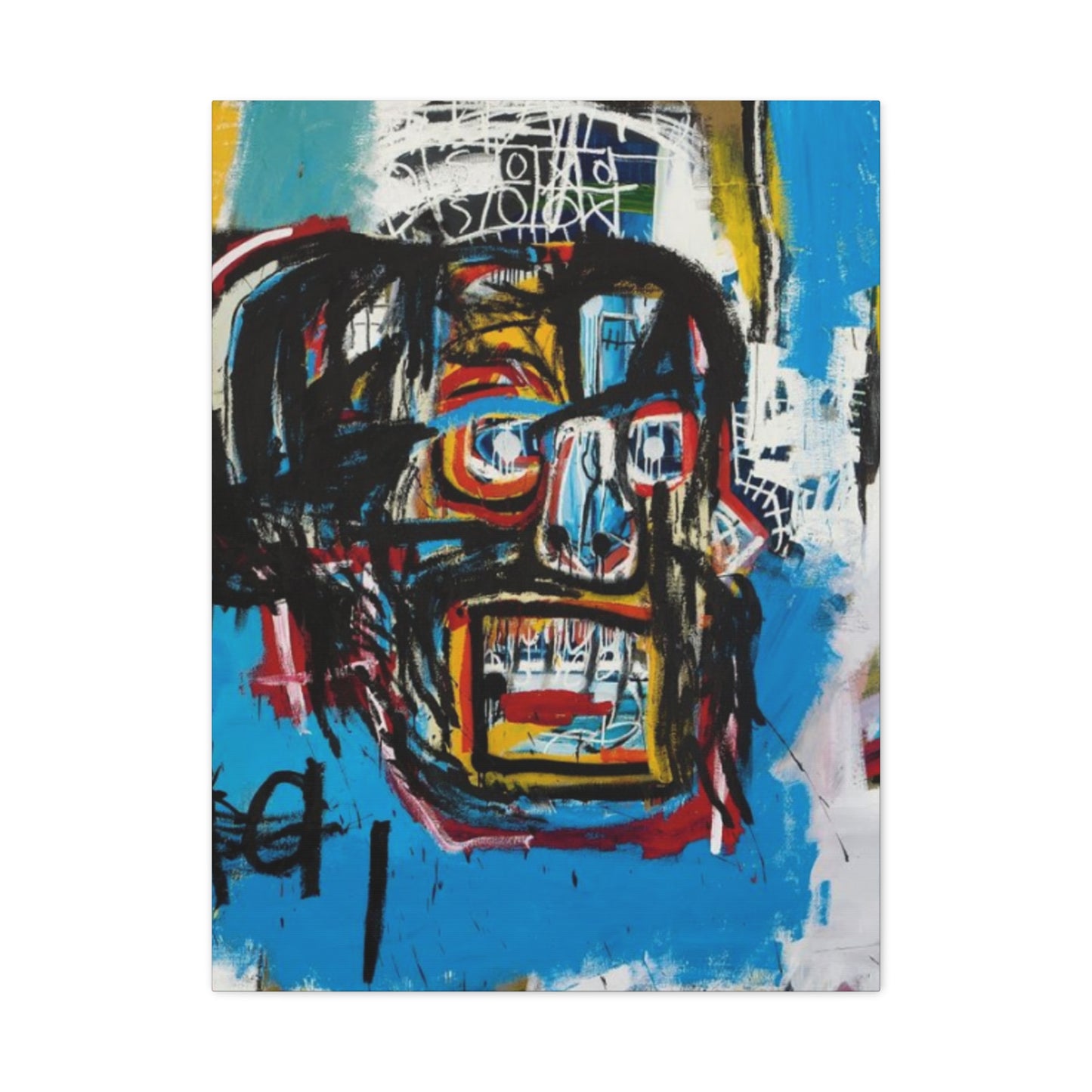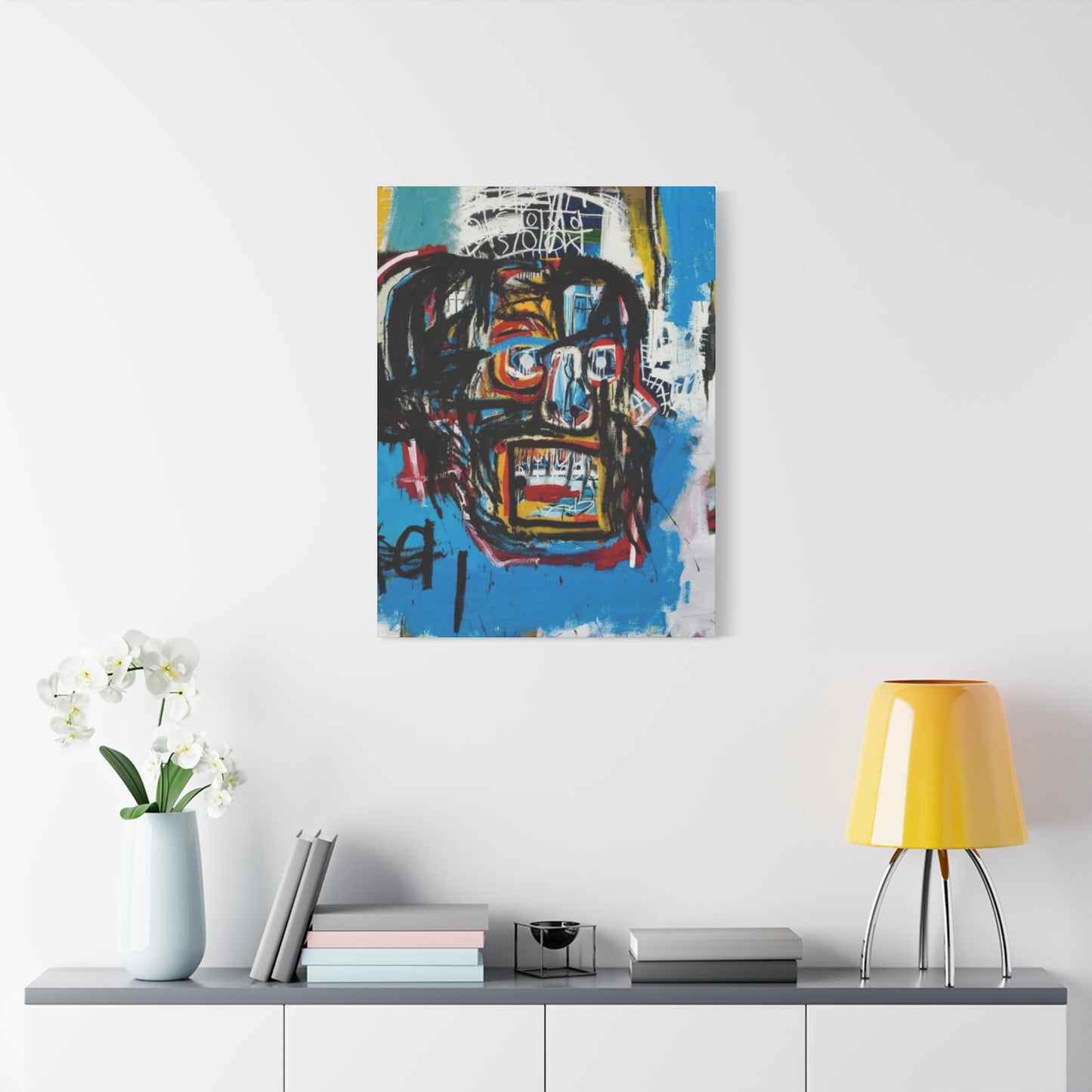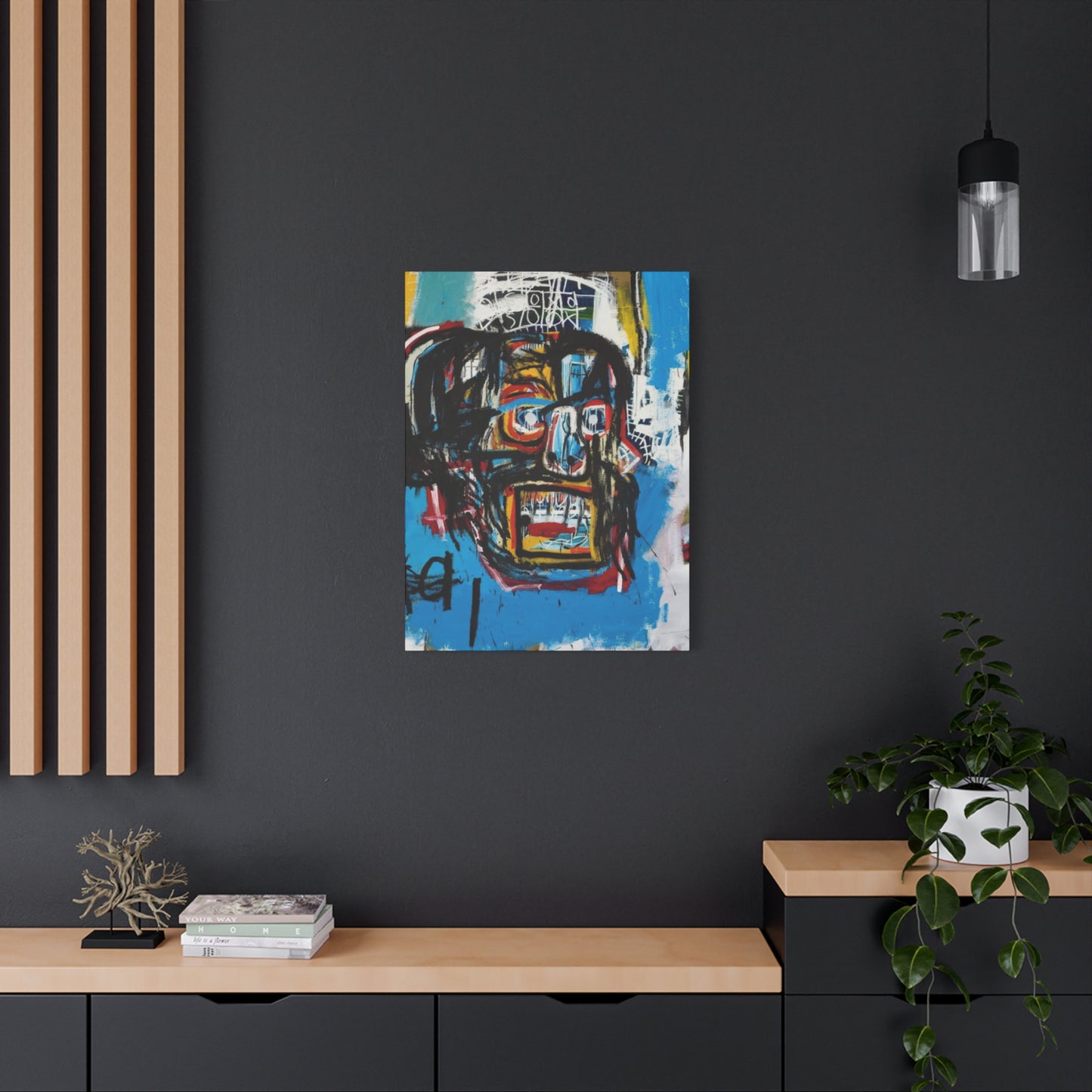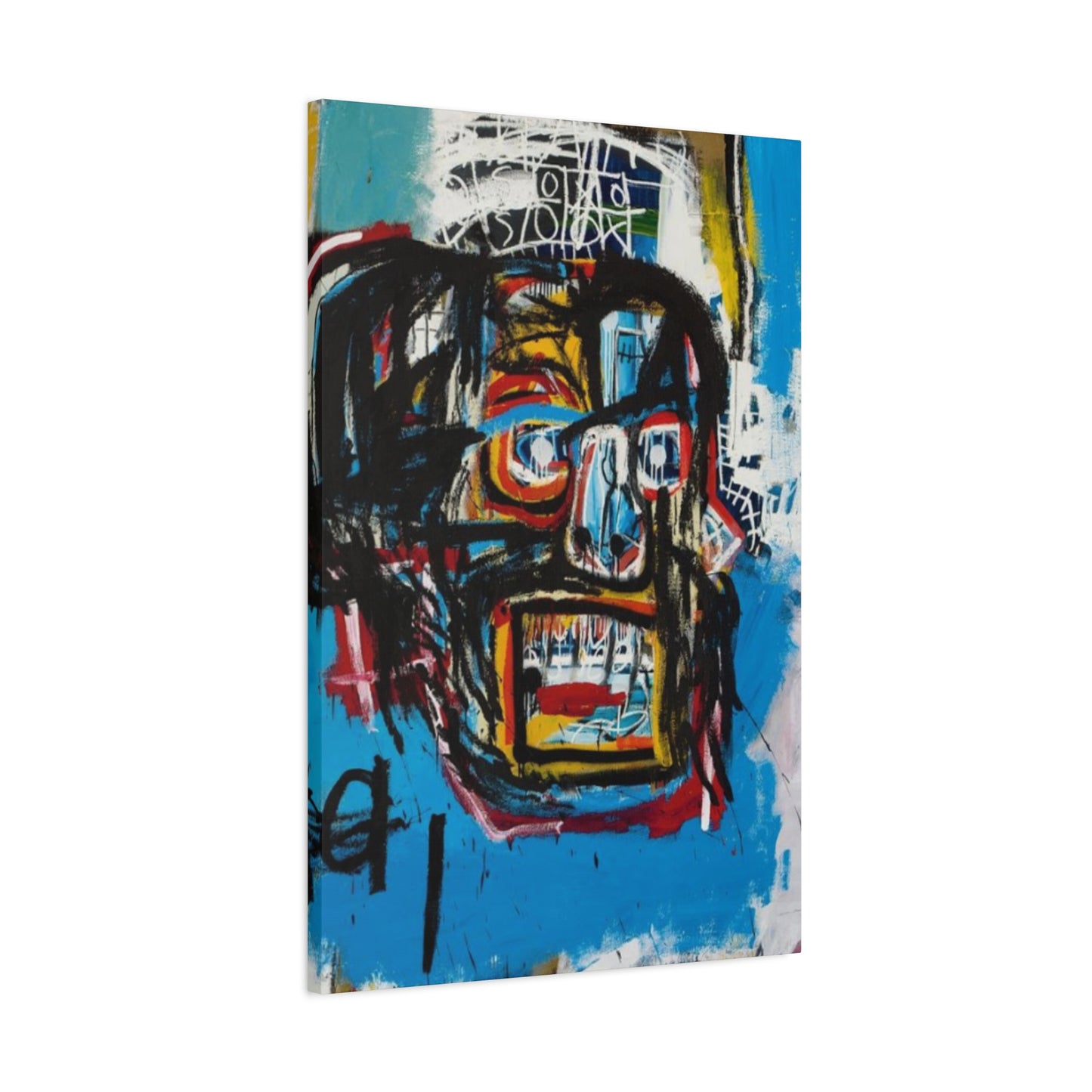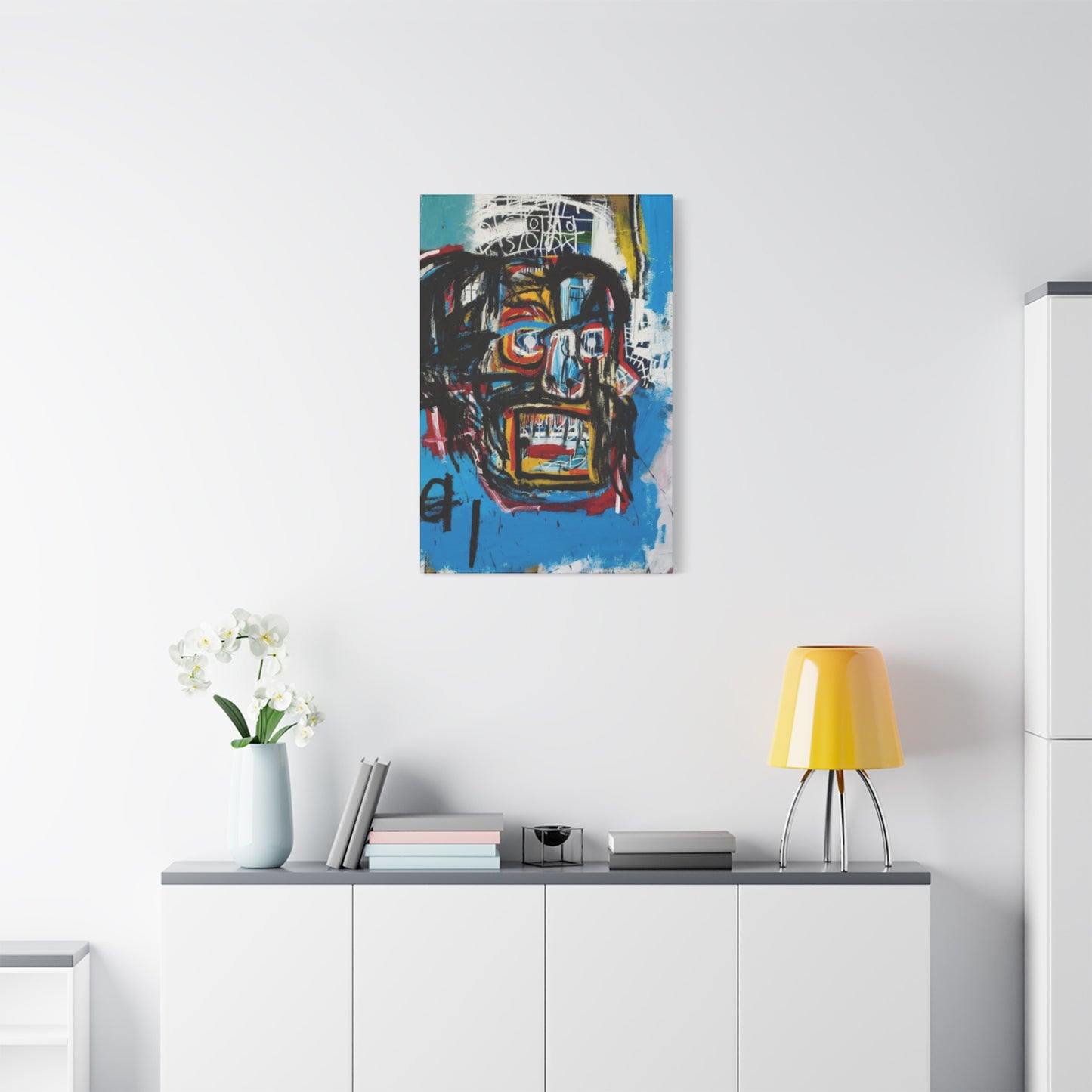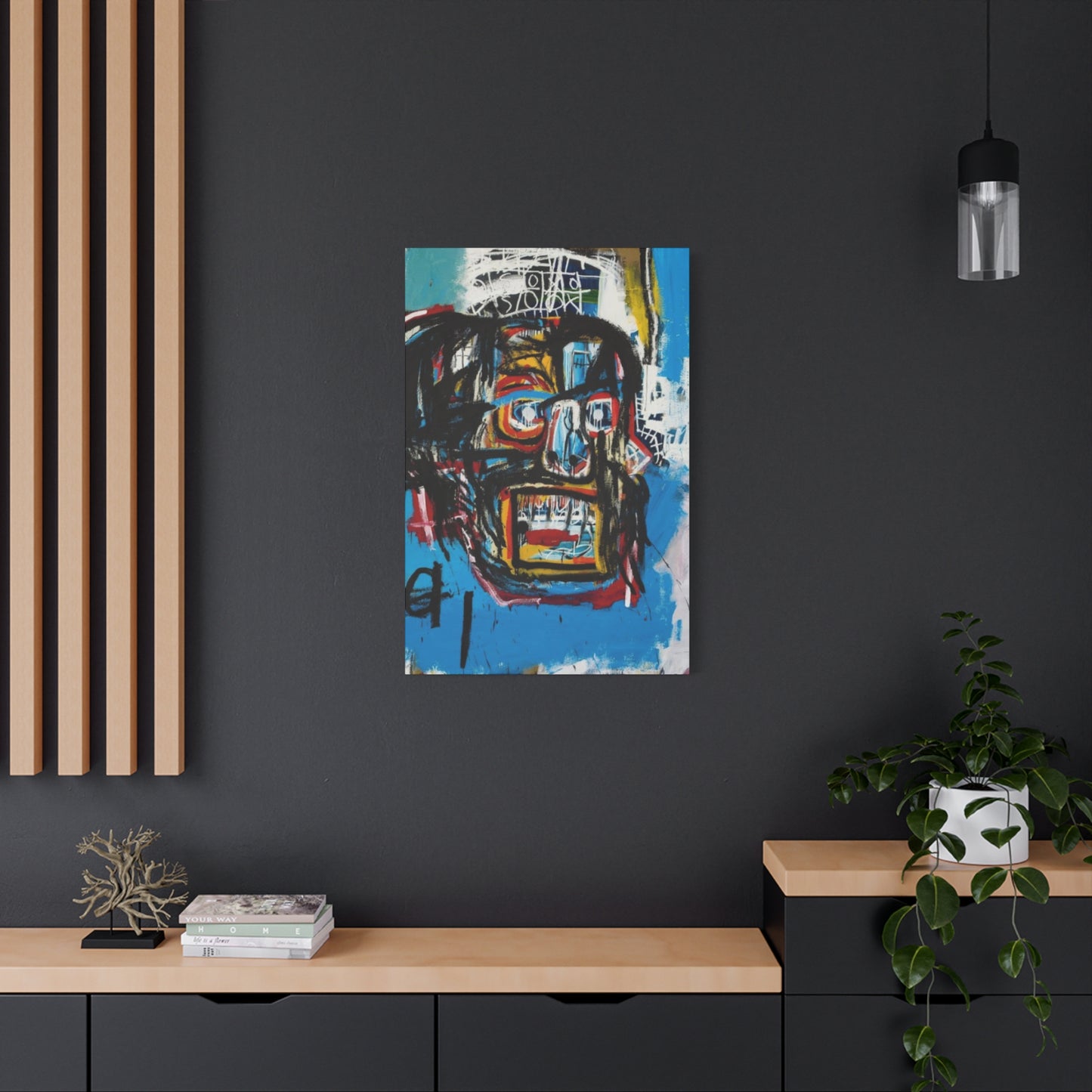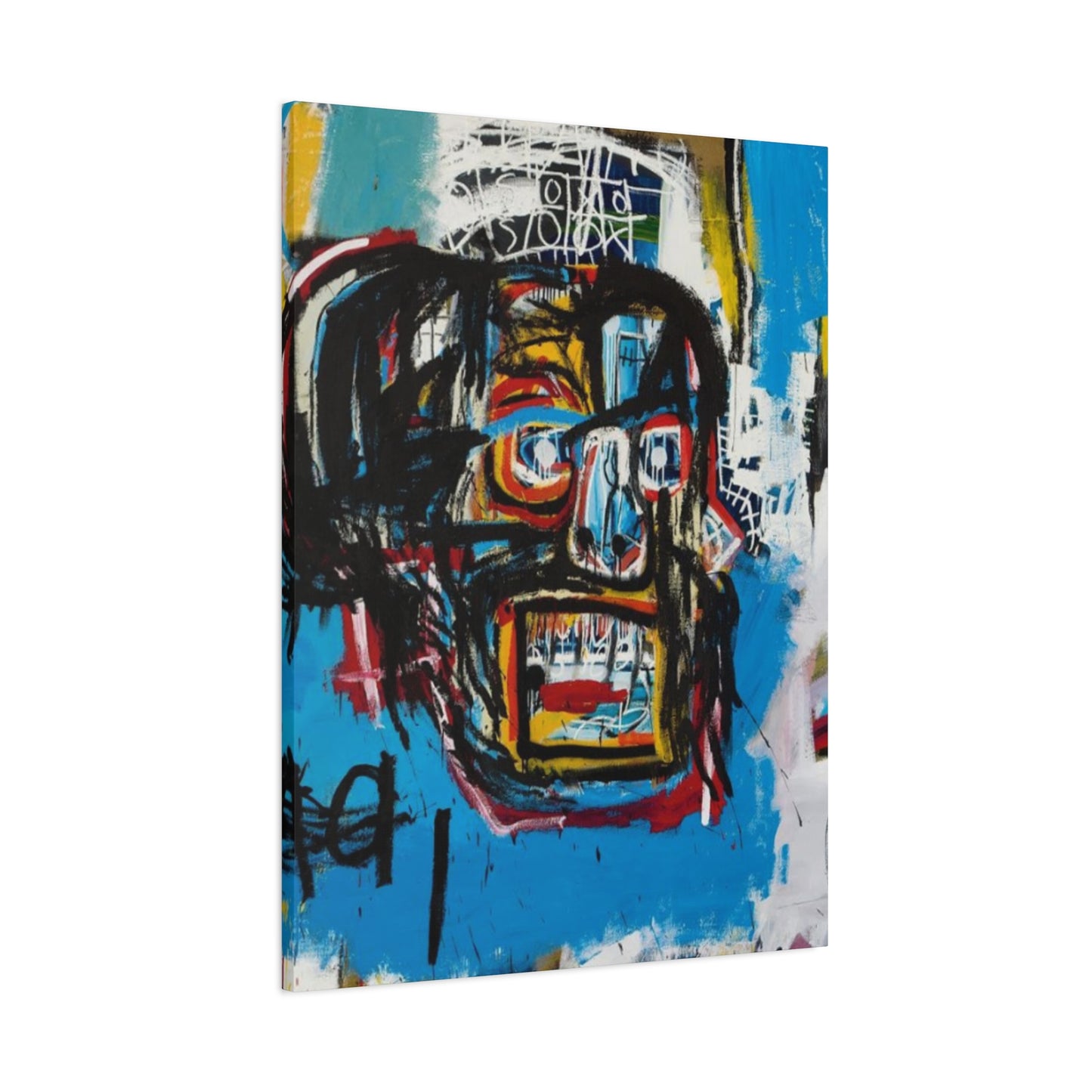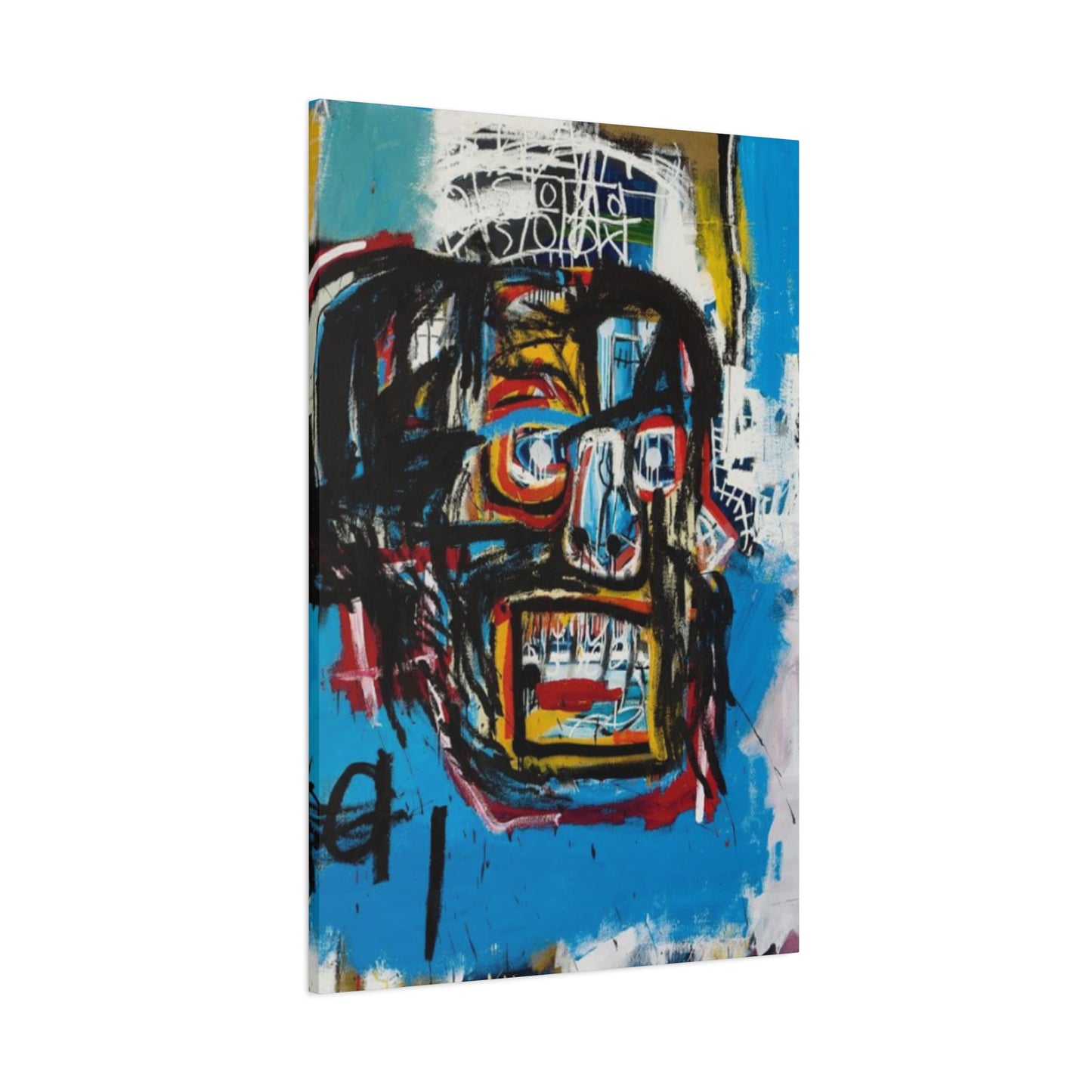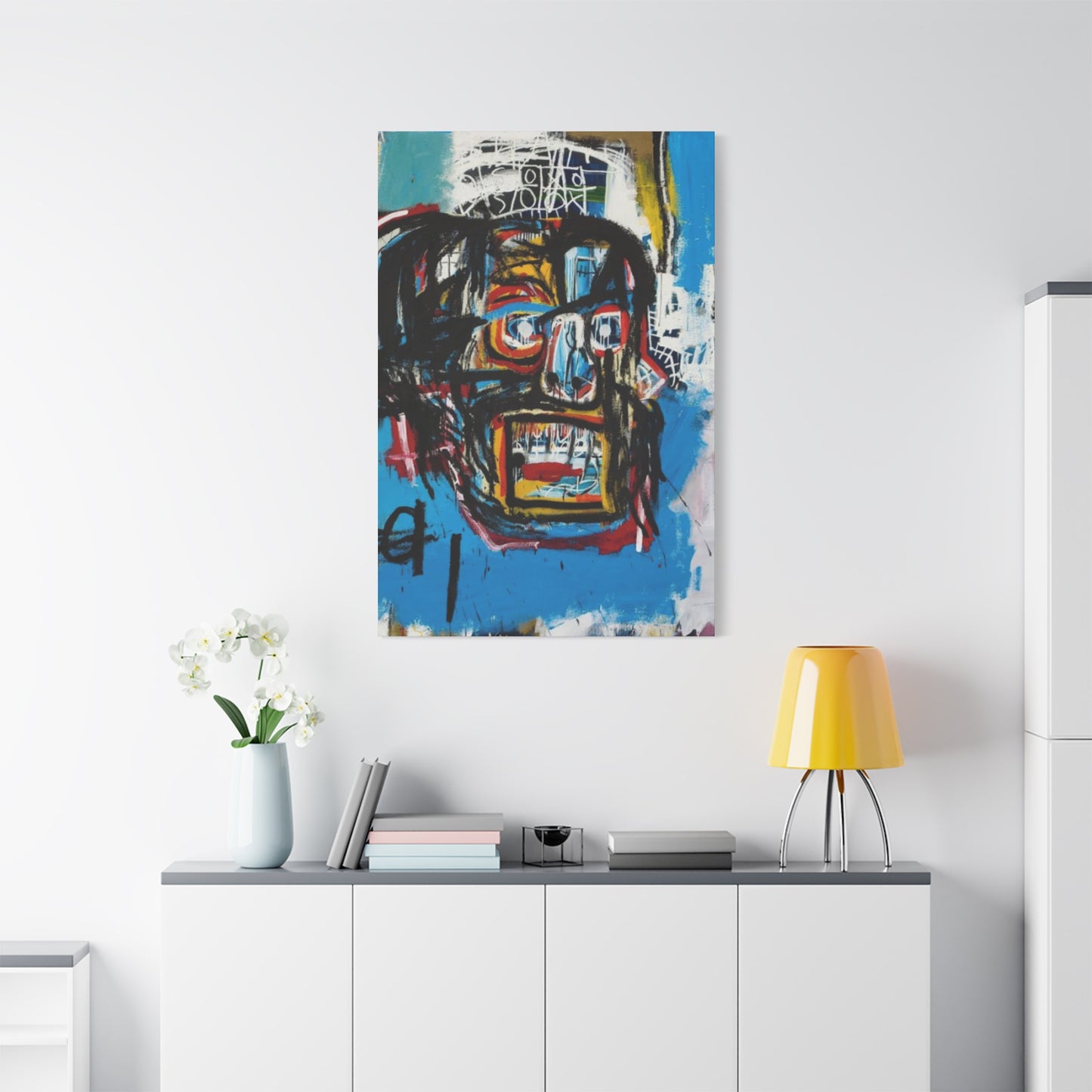Beyond Beauty: The Allure of Scary Face Abstract Modernism Wall Art in Contemporary Interiors
The world of interior design has witnessed a remarkable shift toward bold, unconventional artistic expressions. Among these emerging trends, frightening facial imagery rendered in abstract modernism styles has captured the imagination of homeowners, art collectors, and design enthusiasts worldwide. This distinctive art form combines the raw emotional power of fearsome facial expressions with the sophisticated techniques of contemporary abstract painting, creating pieces that command attention and spark conversation in any space.
The appeal of these disturbing yet captivating artworks lies in their ability to evoke strong emotional responses while maintaining aesthetic sophistication. Unlike traditional decorative pieces that aim solely to please the eye, these canvas prints challenge viewers to confront deeper psychological themes. The distorted features, haunting expressions, and unconventional color palettes work together to create visual experiences that linger in memory long after the initial viewing.
Contemporary artists have embraced this genre as a means of exploring human psychology, societal fears, and the darker aspects of existence. The abstract nature of these works allows for multiple interpretations, making each piece a personal journey for the viewer. Whether displayed in living rooms, studies, galleries, or creative workspaces, these artworks serve as powerful focal points that define the character of entire rooms.
The technical execution of these pieces demonstrates the evolution of modern painting techniques. Artists employ various methods including dripping, splattering, layering, and gestural brushwork to build complex compositions. The scary facial elements emerge from chaotic backgrounds, sometimes clearly defined and other times barely perceptible, creating an interplay between recognition and abstraction that keeps viewers engaged.
Canvas prints of these original works have democratized access to this art form. High-quality reproduction techniques ensure that the texture, depth, and vibrancy of original paintings translate effectively to printed formats. This accessibility has contributed significantly to the widespread adoption of frightening facial abstract art in residential and commercial spaces. Homeowners no longer need to invest in expensive originals to incorporate museum-quality artwork into their interior design schemes.
Modern Scary Facial Abstract Canvas Art
Compositional structure provides the framework that organizes visual elements within scary facial abstract artworks. Skilled artists employ various compositional strategies to control viewer attention, create emotional impact, and maintain visual interest. The placement of the facial elements within the canvas space fundamentally affects how viewers engage with the work. Central placement creates confrontational, direct engagement, with the face staring directly at the viewer. This positioning generates maximum psychological impact, as viewers cannot avoid eye contact with the subject.
Off-center compositions utilizing the rule of thirds create more dynamic, aesthetically sophisticated arrangements. By positioning the primary facial element at intersection points rather than dead center, artists generate visual tension and movement. The negative space created by this positioning becomes an active compositional element rather than mere background. This approach feels less confrontational while maintaining strong visual interest. The viewer's eye naturally travels between the focal point and supporting elements, creating a more complex viewing experience.
Layering techniques add depth and complexity to scary facial abstract compositions. Artists build multiple levels of visual information, with background textures, mid-ground abstract elements, and foreground facial features creating spatial depth. This layering can be literal, with physical paint textures creating dimensional variation, or illusionistic, using color and value relationships to suggest three-dimensional space. The interplay between layers creates opportunities for surprising visual discoveries as viewers spend time with the artwork.
Fragmentation represents a particularly effective compositional approach for frightening facial abstractions. Rather than presenting a complete, unified face, artists scatter facial elements across the composition. An eye might appear in one corner, a mouth in another, with abstract gestures and marks connecting these elements. This fragmentation creates psychological unease, as the brain attempts to assemble a coherent face from disconnected parts. The resulting sense of incompleteness and violation of expected facial unity proves deeply unsettling.
Symmetry and asymmetry both serve important compositional functions in this art form. Perfect symmetry can create uncanny, mask-like qualities that feel artificial and threatening. The human brain recognizes that natural faces possess subtle asymmetries, so perfectly symmetrical faces trigger unconscious recognition that something is wrong. Conversely, extreme asymmetry creates instability and chaos, suggesting trauma or transformation. Artists carefully calibrate the degree of symmetry to achieve specific psychological effects.
Scale manipulation within compositions generates dramatic impact in scary facial abstract art. Extremely close-cropped faces that extend beyond canvas boundaries create intimate, invasive viewing experiences. The viewer feels uncomfortably close to the subject, invading personal space despite the two-dimensional nature of the artwork. Alternatively, small faces in vast abstract fields can create feelings of isolation, vulnerability, or insignificance. The relationship between facial elements and surrounding space profoundly affects emotional tone.
Movement and directional flow guide viewer attention through the composition. Artists use various techniques to create visual pathways, including gestural brushstrokes, color gradients, and implied lines formed by aligned elements. In scary facial abstractions, this movement often leads to or emanates from the eyes, the facial feature humans instinctively focus on. Creating strong directional flow ensures that even complex, chaotic compositions maintain coherence and guide the viewing experience in intentional ways.
Material Choices and Canvas Print Quality for Frightening Facial Art
The materials used to produce canvas prints dramatically affect the final artwork's appearance, longevity, and impact. High-quality canvas materials form the foundation of professional-grade prints. Cotton canvas remains the gold standard, offering excellent color reproduction, durability, and a traditional art texture that closely mimics hand-painted works. The natural fiber structure of cotton creates subtle texture variations that add depth and visual interest. Premium cotton canvas can last for decades without significant degradation when properly displayed.
Polyester canvas has gained popularity as a cost-effective alternative that offers certain advantages over cotton. This synthetic material resists moisture and stretching better than natural fibers, making it suitable for humid environments or spaces with variable conditions. Polyester canvas typically features smoother surfaces that can reproduce fine details with exceptional clarity. For scary facial abstract art containing intricate linework or subtle color transitions, polyester canvas may actually provide superior results compared to textured cotton alternatives.
Canvas weight, measured in ounces per square yard, indicates the material's thickness and durability. Heavier canvas weights, typically ranging from eight to fifteen ounces, provide more substantial feel and resistance to warping. For large-format prints of frightening facial abstract art, heavier canvas ensures the piece maintains structural integrity without sagging or rippling. The additional weight also contributes to a more premium appearance and feel that enhances perceived value.
Coating applications significantly influence how canvas accepts ink and how colors appear in the final print. Specialized coatings optimize ink absorption and color vibrancy while protecting the canvas surface. Matte coatings reduce glare and reflections, ensuring the artwork remains visible from various angles and lighting conditions. Semi-gloss and gloss coatings enhance color saturation and create more dramatic visual impact, though they may produce reflections in certain lighting situations. The choice between coating types depends on the specific artwork and intended display environment.
Printing technology determines color accuracy, detail resolution, and overall print quality. Giclée printing using archival pigment inks represents the highest quality option for canvas art reproduction. This process employs microscopic ink droplets to build colors with exceptional accuracy and smooth tonal transitions. Archival pigment inks resist fading for decades, ensuring scary facial abstract art maintains its impact throughout its lifespan. The combination of giclée printing with premium canvas materials produces results nearly indistinguishable from original paintings.
Stretching and mounting methods affect how the finished canvas print appears when displayed. Gallery wrapping, where the image continues around the sides of the stretcher frame, creates a modern, frameless presentation. This approach works particularly well for scary facial abstract art, as it eliminates visual barriers between artwork and viewer. The three-dimensional quality of gallery-wrapped canvas adds physical presence that flat prints cannot match. Standard wrapping with solid-colored or mirrored sides offers alternative presentations suited to different aesthetic preferences.
Protective coatings applied after printing provide additional defense against environmental factors. UV-resistant varnishes prevent color fading from sunlight exposure, essential for artwork displayed in naturally lit spaces. These coatings also protect against dust, moisture, and minor physical contact. Some protective coatings add subtle texture that enhances the hand-painted appearance of canvas prints. For scary facial abstract art destined for high-traffic areas, protective treatments significantly extend the artwork's usable life.
Framing Options and Presentation Styles for Modern Abstract Horror Art
Presentation choices significantly influence how scary facial abstract canvas art appears and integrates into interior environments. Gallery wrap canvas stretching creates contemporary, frameless presentations that emphasize the artwork itself without decorative borders. This approach has become standard for modern abstract art, as it eliminates visual barriers and allows the image to flow to the edges. The exposed canvas sides can continue the front image or feature solid colors chosen to complement the artwork.
Floating frames provide refined presentation while maintaining focus on the canvas. These frames create narrow borders around the artwork, typically in black, white, or natural wood finishes. The frame sits slightly away from the canvas face, creating a subtle shadow gap that emphasizes the three-dimensional quality of the piece. Floating frames add sophistication without detracting from the artwork itself, making them popular choices for scary facial abstract pieces destined for professional or upscale residential environments.
Traditional wood frames in substantial profiles can add gravitas and formality to frightening facial abstractions. Ornate frames create interesting contrasts between classical presentation styles and contemporary subject matter. This juxtaposition can be intentionally ironic or serve to legitimize challenging artwork by framing it in traditional fine art contexts. Simple, clean-lined wood frames in dark finishes complement the often dark, intense nature of scary facial abstract art without competing for attention.
Metal frames offer sleek, industrial aesthetics that align well with modern abstract sensibilities. Aluminum and steel frames in black, silver, or brass finishes provide clean edges and contemporary style. The cool, hard qualities of metal frames can reinforce the emotional intensity of frightening facial imagery. Narrow metal profiles maintain focus on the artwork while providing protective boundaries and structural support for the canvas.
Shadow box framing creates substantial depth by positioning the canvas several inches from the wall surface. This presentation style adds dramatic three-dimensional presence and creates interesting light and shadow effects. For scary facial abstract art, shadow box mounting enhances the sense that the artwork exists in its own space, separated from the wall behind it. This separation can intensify the psychological impact, making the facial imagery feel more present and immediate.
Acrylic or glass glazing rarely suits canvas prints, as it eliminates the textural qualities that make canvas appealing. However, certain presentation contexts may benefit from protective glazing, particularly in high-touch environments or locations with environmental challenges. When glazing is necessary, non-reflective options preserve visibility while providing protection. The decision to add glazing should carefully consider whether the protective benefits outweigh the loss of texture and the risk of glare.
Mounting methods affect both presentation and installation practicality. Traditional hanging with wire and hooks works for most residential applications but requires finding wall studs or using appropriate anchors for heavy pieces. French cleat systems provide secure mounting for substantial artworks while keeping installation hardware invisible. For rental situations or those who frequently rearrange artwork, adhesive strips designed for canvas art offer damage-free alternatives, though weight limits must be carefully observed.
Stylistic Variations Within Scary Facial Abstract Modernism
The broad category of frightening facial abstract art encompasses numerous distinct stylistic approaches, each with unique aesthetic qualities and emotional impacts. Expressionistic styles emphasize raw emotion through gestural brushwork, intense colors, and dramatic distortions. Artists working in this manner prioritize emotional communication over realistic representation. Faces become vehicles for psychological expression, with features exaggerated, colors heightened, and compositions designed to evoke visceral responses. This style traces direct lineage to German Expressionism and continues to resonate with contemporary audiences.
Minimalist approaches to scary facial abstraction employ restraint and reduction to create psychological impact. These works might feature simple linear suggestions of facial features against monochromatic backgrounds, relying on viewers to complete the image mentally. The power of minimalist scary faces lies in what they omit rather than what they show. This style creates unease through ambiguity and understatement, engaging viewer imagination more than explicit imagery. Minimalist pieces often feel more sophisticated and intellectually engaging than overtly dramatic alternatives.
Graffiti-influenced styles bring urban art energy to frightening facial abstractions. Bold outlines, graphic shapes, dripping paint effects, and cultural references characterize this approach. Artists working in this style often incorporate text elements, symbols, and imagery from street culture, creating pieces that feel contemporary and socially relevant. The raw, unpolished quality of graffiti-style art adds authenticity and edge that appeals to younger collectors and those seeking alternatives to traditional fine art aesthetics.
Neo-Expressionist scary facial abstractions combine figurative elements with abstract techniques in complex, layered compositions. These works often feature recognizable facial structures embedded within chaotic abstract environments. Heavy impasto textures, aggressive mark-making, and intense color contrasts create dense, information-rich surfaces. This style demands extended viewing time as viewers discover details and relationships within busy compositions. The complexity mirrors psychological complexity, making these pieces particularly suitable for collectors interested in depth and artistic sophistication.
Surrealist-influenced approaches blend frightening facial imagery with dreamlike, irrational elements. These works might combine human features with unexpected objects, animals, or abstract forms, creating impossible combinations that challenge logic. The surrealist tradition of tapping into unconscious imagery produces pieces that feel psychologically revealing and symbolically rich. Viewers often find personal meanings in surrealist scary facial abstractions, as the ambiguous imagery allows for subjective interpretation.
Geometric abstraction applied to frightening faces creates structured, formal compositions using angular shapes and precise lines. Faces become deconstructed into planes and facets, suggesting Cubist influences while maintaining recognizability. This analytical approach to scary facial imagery feels intellectually rigorous and formally sophisticated. The tension between cold geometric structure and warm organic subject matter creates interesting conceptual and visual dynamics.
Photo-based approaches begin with photographic elements that are then heavily manipulated through digital and analog techniques. Artists might start with photographs of faces, then apply filters, distortions, painting, and various effects to transform them into abstract frightening imagery. This hybrid method combines the documentary quality of photography with the expressive freedom of painting. The resulting works often maintain subtle photographic details that ground the abstraction in recognizable reality while pushing into fantastical territory.
Color Schemes and Palette Selection for Various Interior Design Styles
Integrating scary facial abstract canvas art into existing interior design schemes requires thoughtful consideration of color relationships and aesthetic compatibility. Modern minimalist interiors characterized by neutral color palettes and clean lines benefit from scary facial abstractions that provide controlled color accents. Black and white pieces with limited color highlights work exceptionally well in these environments, adding visual interest without disrupting the minimalist aesthetic. The dramatic subject matter provides the visual punch minimalist spaces need without cluttering the simplified design vocabulary.
Industrial-style interiors featuring exposed materials, metal elements, and raw textures harmonize naturally with scary facial abstract art. The edgy, urban quality of this design style aligns philosophically with challenging artwork. Color palettes dominated by grays, blacks, and weathered metal tones create perfect backdrops for frightening facial imagery. Artists working with rust effects, metallic paints, or industrial-inspired compositions create pieces that feel native to industrial environments. The combination reinforces authentic, unpolished aesthetics valued in this design style.
Contemporary bohemian or eclectic interiors embrace color variety and artistic diversity, making them ideal environments for colorful scary facial abstractions. These spaces welcome multiple art pieces in various styles and color schemes, creating visually rich, personally expressive environments. Bright, unexpected color combinations in frightening facial art contribute to the collected, individualistic feeling bohemian interiors cultivate. The willingness to embrace unconventional subject matter aligns with bohemian values of authenticity and artistic freedom.
Dark academia and gothic-inspired interiors provide natural homes for scary facial abstract art. These design styles embrace moody, intellectual atmospheres with dark wood furniture, rich jewel tones, and literary references. Deep purple, burgundy, emerald green, and midnight blue scary facial abstractions complement these environments perfectly. The intellectual curiosity and appreciation for darker themes characteristic of these styles make them particularly receptive to psychologically complex artwork.
Scandinavian design's light, airy aesthetic might seem incompatible with frightening imagery, but thoughtful selection creates interesting contrasts. Monochromatic scary facial abstractions in black, white, and gray provide striking focal points against Scandinavian white walls and natural wood elements. The minimalist, functional principles of Scandinavian design appreciate artwork that makes clear, confident statements. A single powerful piece can anchor an entire Scandinavian-inspired room without violating the style's essential character.
Art Deco-influenced interiors with geometric patterns, metallic accents, and luxurious materials create sophisticated environments for scary facial abstractions. Pieces incorporating gold, silver, or copper metallic elements complement Art Deco metallics. Geometric abstract interpretations of frightening faces align with Art Deco's love of pattern and structure. The glamorous, dramatic quality of Art Deco design can embrace equally dramatic artwork, creating cohesive high-impact environments.
Transitional design blending traditional and contemporary elements requires careful artwork selection to maintain balance. Scary facial abstractions leaning toward more refined, sophisticated executions work better than extremely raw or aggressive pieces. Color schemes pulling from traditional color palettes—deep reds, navy blues, forest greens—help bridge contemporary subject matter with traditional surroundings. The key lies in finding pieces that respect both traditional craftsmanship values and contemporary artistic innovation.
Installation Techniques and Display Strategies for Canvas Artwork
Proper installation ensures scary facial abstract canvas art appears as intended while remaining securely mounted. Wall preparation begins with assessing the wall surface condition and material composition. Drywall requires different hardware than plaster, concrete, or brick. Smooth, clean walls provide ideal surfaces for displaying artwork. Any repairs or touch-ups should be completed before installation. Consider wall color and how it interacts with the artwork's color palette, as background color significantly affects visual perception.
Locating wall studs provides the most secure mounting points for substantial canvas pieces. Electronic stud finders simplify this process, though traditional methods like tapping and listening for solid areas remain effective. For pieces weighing more than twenty pounds, securing directly to studs is essential for safety and stability. Mark stud locations lightly with pencil, measuring carefully to ensure hardware placement aligns with the canvas mounting system.
Hanging height dramatically affects viewer engagement with scary facial abstract art. The general guideline suggests centering artwork at approximately fifty-seven to sixty inches from the floor, the average eye level for standing viewers. However, this guideline should be adjusted based on ceiling height, furniture placement, and the specific viewing situation. Artwork viewed primarily while seated, such as in dining areas, should hang lower. Pieces in tall spaces with high ceilings can be positioned higher to maintain proportional relationships with the architecture.
Leveling ensures professional appearance and prevents the visual discomfort of crooked artwork. Quality levels with multiple vials allow for precise horizontal and vertical alignment. For gallery wall installations featuring multiple scary facial abstract pieces, maintaining consistent spacing and alignment becomes even more critical. Small misalignments become amplified when multiple pieces are viewed together. Laser levels can assist with larger installations where traditional levels prove cumbersome.
Lighting design significantly influences how scary facial abstract canvas art appears throughout the day. Natural light provides ideal viewing conditions but can fade artwork over time. Position pieces away from direct sunlight or use UV-filtering window treatments to protect against fading. Artificial lighting offers control over how artwork appears during evening hours. Track lighting, picture lights, or strategically positioned accent lights can dramatically enhance scary facial abstractions, creating shadows and highlights that add depth and dimension.
Gallery wall arrangements require planning and often benefit from floor layouts before wall installation. Lay pieces on the floor in various arrangements to determine optimal configuration. Consider both individual piece impact and how multiple works interact visually. Scary facial abstract art can be arranged to create narrative progressions, color harmonies, or stylistic variations. Maintain consistent spacing between pieces, typically two to four inches, though spacing can vary based on piece sizes and desired effect.
Seasonal rotation keeps interior environments fresh and allows collectors to display various pieces from their collections. Scary facial abstract art particularly suits autumn and Halloween seasons, when darker, more intense aesthetics feel seasonally appropriate. Creating storage solutions for artwork not currently displayed protects pieces from damage. Canvas should be stored vertically rather than stacked horizontally, in climate-controlled environments away from moisture and temperature extremes. Proper storage ensures pieces remain in pristine condition for years of enjoyment.
Cultural Significance and Symbolism in Frightening Facial Imagery
Frightening facial imagery carries deep cultural significance extending across human societies throughout history. The universal human tendency to seek faces in random patterns, a phenomenon called pareidolia, demonstrates how fundamentally faces matter to human cognition and culture. When artists deliberately create disturbing facial imagery, they tap into primal psychological responses that transcend individual cultural backgrounds. The fear response to threatening faces represents an evolutionary adaptation that helped ancestors identify danger quickly.
Death masks and memento mori traditions across cultures provide historical precedent for frightening facial art. Many societies created casts of deceased individuals' faces, preserving their appearance for commemorative purposes. These objects occupy an unsettling space between life and death, familiar humanity and lifeless matter. Contemporary scary facial abstract art often echoes these traditions, exploring mortality, identity, and the boundaries between living and dead. The cultural weight of these themes adds depth to seemingly purely aesthetic works.
Masks feature prominently in ritual contexts worldwide, used to transform wearers into spirits, ancestors, deities, or supernatural beings. African, Native American, and Pacific Islander mask traditions all employ distorted, exaggerated, or frightening facial features to convey power and otherness. Contemporary artists creating scary facial abstractions consciously or unconsciously reference these mask traditions. The artwork functions as fixed, permanent masks that transform spaces rather than individuals.
Horror literature and cinema have profoundly influenced contemporary scary facial abstract art. Iconic images from horror films have become embedded in collective cultural consciousness, providing shared reference points artists can engage with. The visual vocabulary of horror—distorted features, unnatural colors, expressions of terror or malevolence—has been refined through decades of filmmaking. Artists working in scary facial abstraction draw on this refined visual language while pushing it in new directions through abstract techniques.
Day of the Dead traditions from Mexican culture present fascinating examples of how frightening imagery can be celebratory rather than purely terrifying. Calavera imagery depicts skulls in colorful, decorative ways that honor death while making it less frightening. Some scary facial abstract artists adopt similar approaches, using bright colors and decorative elements to create pieces that are visually striking without being purely negative. This cultural tradition demonstrates how context dramatically affects the meaning of death-related imagery.
The concept of the uncanny valley, where near-human entities provoke revulsion, informs much scary facial abstract art. As artificial representations approach but don't quite achieve human realism, they become deeply unsettling. Artists working in this genre often deliberately position their work in this psychological space, creating faces recognizable as human but sufficiently distorted to trigger unease. The tension between familiarity and otherness generates the psychological complexity that makes these pieces so engaging.
Creating Cohesive Collections with Multiple Scary Facial Canvas Pieces
Building a cohesive collection of scary facial abstract art requires strategic thinking about relationships between individual pieces. Color coordination provides an effective organizing principle for multi-piece collections. Selecting works that share dominant color families creates visual harmony even when individual pieces differ in style or composition. A collection unified by dark blues, purples, and grays maintains cohesion while allowing variation in subject matter and technique. This approach works particularly well for gallery wall installations where multiple pieces appear simultaneously.
Stylistic consistency offers another path to collection coherence. Focusing on works by a single artist or pieces sharing similar techniques creates unified aesthetic experiences. A collection of graffiti-style scary facial abstractions will feel coherent despite variations in specific imagery. Similarly, collecting exclusively minimalist interpretations or exclusively expressionistic pieces creates clear curatorial direction. This approach appeals to collectors who develop strong preferences for particular artistic approaches.
Size variation within collections adds visual interest while maintaining thematic unity. Combining large statement pieces with smaller supporting works creates dynamic arrangements with clear focal hierarchies. The largest, most dramatic piece serves as the anchor, with smaller works orbiting around it. This approach mimics traditional gallery curation strategies and creates professional-looking displays. Varying sizes also allows collections to adapt to different wall spaces throughout a home.
Thematic progression can organize collections around conceptual threads. A collector might assemble pieces exploring different emotional states, from anxiety to rage to melancholy. Alternatively, collections might trace stylistic evolution, showing how abstract facial imagery can range from barely recognizable suggestions to bold, graphic representations. Thematic collections tell stories and invite viewers to consider relationships between pieces rather than experiencing each in isolation. This curatorial depth adds intellectual satisfaction to aesthetic pleasure.
Chronological collecting documents artistic development over time. Following a single artist's evolution or acquiring pieces from different periods of art history creates collections with narrative dimensions. For scary facial abstract art, a chronological collection might span from early Expressionist influences through contemporary digital-hybrid works. This approach appeals to collectors interested in art history and the evolution of visual ideas. The collection becomes educational as well as decorative.
Limited edition series released by artists or publishers provide ready-made cohesive collections. These series typically feature variations on a theme, with consistent sizing and unified aesthetic approaches. Collecting entire series ensures compatibility while supporting the artist's vision. Limited editions also carry potential investment value, as complete series typically command premium prices in secondary markets. This collecting strategy suits those who appreciate structure and completeness.
Lighting Design Principles for Showcasing Abstract Horror Canvas Prints
Lighting design profoundly influences how scary facial abstract canvas art appears and impacts its environment. Natural daylight provides the most accurate color representation but varies throughout the day and seasons. North-facing windows offer consistent, indirect natural light prized by artists and galleries. However, direct sunlight causes fading and damage over time. Positioning scary facial abstract art away from windows where direct sun strikes the canvas protects against deterioration while still benefiting from ambient daylight.
Artificial lighting offers control impossible with natural sources. Incandescent bulbs produce warm light that enhances reds and oranges while muting blues and greens. This warmth can intensify the emotional heat of aggressive scary facial abstractions. However, incandescent technology has largely been superseded by more efficient alternatives. LED bulbs now dominate residential lighting, offering color temperature options ranging from warm to cool. Selecting appropriate color temperature ensures accurate representation of the artist's intended palette.
Color temperature, measured in Kelvin, determines the light's warm or cool quality. Temperatures between 2700K and 3000K produce warm, yellowish light similar to traditional incandescent bulbs. Mid-range temperatures around 3500K to 4100K provide neutral white light. Cool temperatures above 5000K create bluish, daylight-mimicking illumination. For scary facial abstract art, neutral to slightly warm temperatures typically provide the most flattering, accurate presentation. Extremely warm or cool lighting can distort color relationships and diminish artistic impact.
Color Rendering Index (CRI) measures how accurately light sources reproduce colors compared to natural sunlight. High CRI values above 90 ensure colors appear vibrant and true to life. This becomes critical for scary facial abstract art where color relationships contribute significantly to emotional impact. Premium LED bulbs with CRI ratings of 95 or higher reproduce subtle color nuances that lower-quality lighting misses. Investment in high-CRI lighting protects the investment in quality artwork by presenting it optimally.
Directional lighting creates dramatic effects that enhance the three-dimensional qualities of canvas art. Track lighting systems offer flexibility to aim light precisely where desired. Positioning lights at 30-degree angles from the wall surface minimizes glare while providing even illumination. Multiple adjustable lights allow for experimentation to find optimal angles for specific pieces. The texture of canvas becomes more apparent under directional lighting, adding visual interest and emphasizing the physicality of the artwork.
Picture lights mounted directly above frames provide traditional gallery-style illumination. These dedicated fixtures ensure consistent lighting regardless of room lighting changes. LED picture lights consume minimal energy while providing focused illumination. Arm-style picture lights extend forward from the wall, directing light downward across the canvas surface. This approach works particularly well for scary facial abstract art displayed in locations without nearby ceiling lighting options. Battery-operated and plug-in options accommodate various installation scenarios.
Ambient room lighting affects how focal artwork appears. Bright overall illumination can wash out the impact of scary facial abstractions, reducing their dramatic presence. Rooms with moderate ambient lighting allow accent-lit artwork to command attention more effectively. Dimmer switches provide control over ambient levels, enabling adjustment based on time of day or desired atmosphere. Evening viewing with reduced ambient light and focused artwork illumination creates intimate, gallery-like experiences.
Market Trends and Investment Potential in Scary Facial Abstract Art
The contemporary art market has demonstrated increasing interest in bold, emotionally charged works including scary facial abstract pieces. Market data from auction houses and galleries indicates growing collector demand for artwork that makes strong statements and challenges conventional aesthetic preferences. This trend reflects broader cultural shifts toward authenticity and individual expression. Scary facial abstract art appeals to collectors seeking pieces that distinguish their collections from more traditional or conservative holdings.
Emerging artists working in this genre often offer accessible entry points for new collectors. Original works by unestablished artists can be acquired for hundreds rather than thousands of dollars, making art collecting financially feasible for broader audiences. As artists develop reputations and exhibition histories, early collectors benefit from appreciation in value. The scary facial abstract genre includes many talented emerging artists whose work deserves attention and whose trajectory suggests future market success.
Limited edition canvas prints democratize access to work by established artists whose originals command premium prices. These editions, typically numbered and signed by artists, occupy an interesting market position between mass-produced posters and unique originals. Limited editions maintain exclusivity through restricted production runs while offering affordability. For scary facial abstract art, limited editions allow collectors to acquire high-quality pieces that retain potential investment value at accessible price points.
Authentication and provenance documentation protect investment value in the art market. Certificates of authenticity from artists or authorized dealers provide crucial verification of legitimacy. For canvas prints, documentation should specify edition size, print number, and any artist signatures or markings. Maintaining purchase receipts and provenance records enhances resale potential. Collectors building investment-grade collections should prioritize documented pieces from reputable sources.
Market cycles affect all art categories including scary facial abstract works. During economic expansions, luxury goods including art experience increased demand and price appreciation. Recessions typically soften art markets, though historically significant or exceptionally desirable pieces remain stable. Collectors approaching scary facial abstract art as investment should maintain long-term perspectives, as short-term flipping rarely succeeds in art markets. Decade-long holding periods allow market cycles to average out while giving artists time to develop reputations.
Exhibition history significantly impacts artwork value. Pieces that have been displayed in galleries, museums, or important group shows carry enhanced prestige and documentation. For scary facial abstract art, inclusion in thematic exhibitions exploring horror, psychology, or contemporary abstraction adds to provenance. Collectors should research whether prospective acquisitions have exhibition histories and consider this factor in valuation.
Artist reputation drives primary market values and long-term appreciation potential. Artists with strong educational backgrounds, consistent exhibition records, critical recognition, and previous sales history command higher prices. Researching artists before purchasing helps collectors assess whether current pricing reflects genuine value or speculative inflation. Scary facial abstract art created by artists with established careers in other styles or mediums may offer particular value as these artists explore new directions.
Combining Scary Facial Abstract Art with Other Decorative Elements
Successfully integrating scary facial abstract canvas prints into broader interior design schemes requires thoughtful coordination with furnishings, textiles, and accessories. Furniture selection significantly influences how artwork is perceived within spaces. Modern, clean-lined furniture emphasizes the contemporary nature of abstract art. Minimalist pieces in neutral colors provide unobtrusive backgrounds that allow artwork to dominate visually. Leather furniture in black or dark colors complements the edgy aesthetic of scary facial abstractions while adding texture variation.
Textile choices including curtains, rugs, and throw pillows create opportunities to reinforce or contrast with artwork. Selecting textiles that pull colors from scary facial abstract pieces creates visual continuity throughout spaces. A canvas featuring deep reds and blacks might coordinate with burgundy curtains and black accent pillows. Alternatively, neutral textiles allow artwork to provide all color interest. Textured fabrics add tactile dimensions that complement the visual texture of canvas prints.
Sculptural elements introduce three-dimensional components that dialogue with two-dimensional canvas art. Abstract sculptures sharing aesthetic sensibilities with scary facial abstractions create cohesive artistic environments. Pieces in metal, wood, or stone add material variety while maintaining thematic consistency. Positioning sculptures near canvas art creates visual relationships between pieces. The physical presence of sculpture complements the visual presence of canvas prints, enriching spatial experience.
Lighting fixtures serve functional purposes while contributing to aesthetic statements. Industrial-style fixtures with metal and exposed bulbs reinforce the edgy quality of scary facial abstract art. Statement chandeliers create focal points that compete or coordinate with artwork depending on positioning. Task lighting including floor and table lamps should be selected for both functionality and aesthetic compatibility with the overall design scheme. Fixture finish colors—black, bronze, copper—can be coordinated with frame colors or artwork palettes.
Plant life introduces organic elements that provide relief from intense visual stimulation. Large leafy plants in corners or beside furniture soften spaces while adding life and color. The natural curves and textures of plants contrast effectively with angular, aggressive qualities in scary facial abstractions. This juxtaposition creates balanced environments that feel lived-in rather than gallery-sterile. Low-maintenance varieties suit collectors focused more on art than gardening.
Bookshelves and display surfaces provide opportunities for curating additional visual interest. Arranging books by color creates gradated spines that add design elements while serving practical purposes. Decorative objects including sculptures, found objects, or collectibles can be displayed to create layered, personalized environments. Items should be selected to complement rather than compete with primary artwork. Restraint prevents visual clutter that diminishes the impact of featured scary facial abstract pieces.
Mirrors strategically placed near or opposite canvas art create interesting visual effects. Mirrors reflect artwork from different angles, multiplying visual presence and creating depth illusions. Frameless or simply-framed mirrors avoid adding competing visual elements while serving their reflective function. Mirror placement requires experimentation to ensure reflections enhance rather than distract from the primary artwork. Unexpected angles can create intriguing views of scary facial abstractions from positions where direct viewing is impossible.
Digital Art Creation Techniques for Modern Abstract Horror Pieces
Contemporary artists creating scary facial abstract work increasingly employ digital tools alongside or instead of traditional media. Digital painting software provides virtually unlimited colors, instant corrections, and experimental freedom impossible with physical materials. Programs like Adobe Photoshop, Corel Painter, and Procreate offer realistic brush simulations that approximate traditional media while adding digital-specific capabilities. Artists can work in layers, adjusting individual elements without affecting others. This non-destructive workflow encourages experimentation and refinement.
Photographic manipulation forms the foundation of many scary facial abstractions. Artists begin with photographic portraits, then apply filters, distortions, and manual painting to transform realistic images into abstract horror visions. Liquify tools distort facial features in impossible ways. Adjustment layers modify colors to create unnatural, unsettling skin tones. Blend modes combine multiple photographic elements into surreal composites. The photographic foundation provides structural authenticity that grounds extreme abstract manipulation.
Three-dimensional modeling software enables artists to construct virtual faces that can be lit, textured, and distorted before being rendered into two-dimensional images. Programs like Blender, ZBrush, and Cinema 4D allow unprecedented control over form and lighting. Artists sculpt digital clay, creating exaggerated features and impossible anatomies. Virtual cameras capture these forms from dramatic angles with lighting setups that would be difficult or impossible to achieve photographing physical subjects. The rendered images then often undergo additional processing in painting software.
Generative art techniques employ algorithms to create unexpected visual results. Artists write code or use visual programming interfaces to generate patterns, textures, and forms that would be tedious or impossible to create manually. Random variation ensures each generated result differs from previous outputs. For scary facial abstractions, generative techniques might create fractal patterns that resolve into facial features or algorithmic distortions of source images. This approach produces surprising results that push creative boundaries beyond what conscious planning might achieve.
Glitch art aesthetics deliberately introduce digital errors and artifacts into images. File corruption, compression artifacts, data bending, and signal interference create unpredictable distortions. When applied to facial imagery, these techniques produce unsettling mechanical corruptions that suggest digital demons or technological hauntings. The aesthetic connects to contemporary anxieties about technology, surveillance, and digital existence. Glitch techniques can be precisely controlled despite their chaotic appearance, as artists learn which interventions produce desired effects.
Neural network and artificial intelligence tools represent the cutting edge of digital art creation. AI image generators trained on vast datasets can produce original imagery based on text descriptions. Artists using these tools might prompt systems to generate "terrifying abstract face dark colors expressionist style" and receive unique results. These AI-generated images can then be manually refined and adjusted. While controversial in art communities, AI tools are increasingly part of the contemporary digital art toolkit.
Hybrid workflows combining digital and traditional techniques offer particular creative richness. Artists might begin with hand-painted elements that are scanned, digitally manipulated, then reprinted and painted over again. This iterative process builds complexity impossible through purely digital or analog means. The resulting works contain both the perfection of digital processes and the organic imperfections of hand work. For scary facial abstract art, hybrid approaches can combine the precision of digital facial construction with the expressiveness of physical paint application.
Emotional Response Research Related to Abstract Facial Distortion
Scientific research into how humans respond to distorted facial imagery provides insight into scary facial abstract art's psychological impact. Neuroscientific studies using functional magnetic resonance imaging reveal specific brain regions that activate when viewing frightening faces. The amygdala shows heightened activity in response to threatening facial expressions, even when those faces are highly stylized or abstract. This suggests that abstract representations retain psychological power despite lacking photographic realism. The brain's facial recognition systems remain engaged even with severely distorted stimuli.
Research into the uncanny valley phenomenon illuminates why near-human representations feel particularly disturbing. This effect, originally observed in responses to humanoid robots, applies equally to visual art. Faces that appear almost but not quite human trigger unique psychological responses distinct from either clearly human or obviously non-human stimuli. Scary facial abstract artists often unconsciously or deliberately position their work within this uncanny space. The cognitive dissonance between human recognition and abnormality detection creates psychological tension central to the artwork's impact.
Emotional contagion research demonstrates how viewing facial expressions influences viewer emotional states. When people observe expressions of fear, anger, or disgust, they tend to experience corresponding emotions. This effect occurs even with abstract or stylized faces, though typically less intensely than with realistic expressions. Scary facial abstract art leverages emotional contagion to evoke specific feelings in viewers. Artists manipulate expression elements—eye width, mouth position, tension indicators—to trigger desired emotional responses despite abstract execution.
Individual differences in fear response significantly affect reactions to scary facial abstract art. Research identifies personality traits associated with fear sensitivity and threat detection. Individuals with high behavioral inhibition or negative emotionality show stronger responses to threatening stimuli. Conversely, individuals with high sensation-seeking traits demonstrate reduced fear responses and greater attraction to intense stimuli. These individual differences explain why some people enthusiastically embrace scary facial abstract art while others avoid it.
Context dramatically influences emotional responses to frightening imagery. Research demonstrates that framing significantly affects how people interpret ambiguous stimuli. The same frightening facial image presented in an art gallery context elicits different responses than when encountered in a dark alley. The gallery frame signals safety, transforming potential threat into aesthetic experience. This contextual framing allows scary facial abstract art to be enjoyable rather than genuinely frightening. Viewers engage with controlled fear rather than genuine danger responses.
Conclusion
In conclusion, the allure of scary face abstract modernism wall art in contemporary interiors goes far beyond its initial shock value or aesthetic boldness. This provocative art form taps into deep psychological, emotional, and cultural currents, inviting viewers to confront the complexities of human experience in ways that traditional art often avoids. By integrating unsettling and abstracted facial imagery into modern spaces, homeowners and designers create environments that are not only visually striking but intellectually stimulating and emotionally charged.
One of the key reasons this style captivates audiences is its ability to challenge conventional notions of beauty and provoke introspection. Unlike conventional portraiture that seeks to idealize or flatter, scary face abstract modernism embraces distortion, fragmentation, and ambiguity. These faces often appear haunting, unsettling, or even grotesque—yet they draw viewers in, compelling them to explore what lies beneath the surface. This engagement fosters a unique dialogue between the artwork and its audience, encouraging reflection on identity, fear, vulnerability, and the human condition.
Moreover, the abstract nature of these works allows for multiple interpretations, making each piece highly personal and subjective. In contemporary interiors where individuality and self-expression are prized, such wall art becomes a powerful statement of uniqueness. It defies easy categorization, reflecting the multifaceted and often contradictory nature of modern life. This ambiguity invites conversation and curiosity, making scary face abstract pieces compelling focal points in living rooms, galleries, studios, and offices.
The integration of this art style into contemporary spaces also highlights an evolving design philosophy that values emotional complexity and psychological depth. Contemporary interiors are no longer just about comfort or visual harmony; they increasingly seek to tell stories and evoke feelings. Scary face abstract modernism perfectly complements this shift by adding layers of meaning and tension. The stark contrasts, bold lines, and unsettling forms provide visual drama that enlivens minimalist, industrial, or eclectic décor without overwhelming it.
Furthermore, the presence of scary face abstract art can serve as a form of catharsis and empowerment. In a world where people often mask their fears and insecurities, displaying these raw, distorted faces offers a brave acknowledgment of human fragility and resilience. It normalizes the experience of discomfort and complexity, turning what might be perceived as negative emotions into sources of strength and creativity. This psychological dimension enhances the artwork’s impact and enriches the living space with emotional authenticity.
From a practical design perspective, scary face abstract modernism wall art offers versatility despite its intense imagery. The monochromatic palettes and bold graphic lines common in this genre fit well with contemporary color schemes and materials—think concrete, steel, glass, and natural wood. This synergy allows the artwork to anchor spaces ranging from stark urban lofts to cozy, creative studios. Its ability to serve as both a statement piece and an integrated element of design makes it highly adaptable for diverse interiors.
Lighting and placement play critical roles in maximizing the impact of these artworks. Dramatic spotlighting can enhance the textures and contrasts, emphasizing the eerie or enigmatic qualities of the faces. Conversely, softer, diffused lighting may invite more contemplative engagement. Whether hung above a modern sofa, in an entryway, or within a curated gallery wall, scary face abstract modernism draws immediate attention and sustains viewer interest, making it a conversation starter and a defining element of the room.
Culturally, the resurgence of interest in abstract and unsettling facial art reflects broader societal explorations of identity, mental health, and the human psyche. As conversations around vulnerability, trauma, and emotional complexity become more mainstream, art that reflects these themes resonates deeply. Scary face abstract modernism taps into this zeitgeist, offering both a mirror and a challenge to viewers’ perceptions. It pushes boundaries and questions norms, encouraging a more nuanced understanding of beauty, fear, and humanity.

















